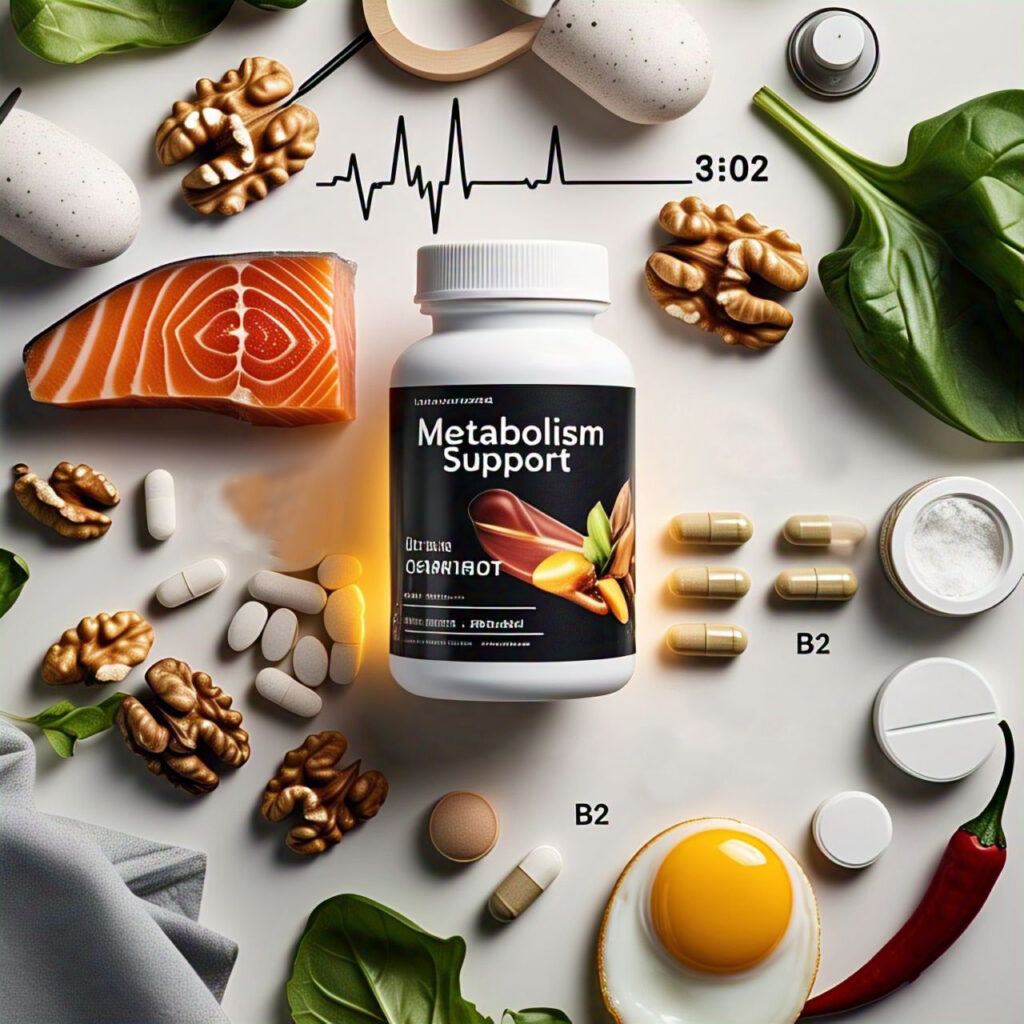Boost Metabolism plays a crucial role in weight loss and overall health. It refers to the process by which the body converts food into energy. A faster metabolism helps burn more calories and makes it easier to lose weight. While genetics play a role in metabolic rate, there are several lifestyle choices and habits that can significantly boost metabolism. In this comprehensive guide, we will explore effective strategies to enhance metabolism for faster weight loss.
Understanding Metabolism
Metabolism consists of three main components:
- Basal Metabolic Rate (BMR): The number of calories your body burns at rest to maintain vital functions like breathing and circulation.
- Thermic Effect of Food (TEF): The energy required to digest, absorb, and process nutrients from food.
- Physical Activity: The calories burned through exercise and daily activities.
To boost metabolism effectively, it is essential to target all three components.

Effective Strategies to Boost Metabolism
1. Increase Protein Intake
Eating protein-rich foods increases the thermic effect of food (TEF) and helps preserve muscle mass, which is essential for a higher metabolic rate. Some high-protein foods include:
- Lean meats (chicken, turkey, fish)
- Eggs
- Dairy products (Greek yogurt, cottage cheese)
- Legumes and beans
- Nuts and seeds
Protein digestion burns more calories compared to fats and carbohydrates. Additionally, consuming protein helps reduce cravings and supports muscle repair after exercise.
2. Drink More Water
Water is essential for metabolism, as it helps in the digestion and absorption of nutrients. Drinking cold water can also temporarily boost metabolism by making the body work harder to warm it up. Aim for at least 8-10 glasses of water daily. Dehydration can slow down metabolism, making weight loss more difficult.
Water also helps flush out toxins and keeps the digestive system running efficiently. Replacing sugary drinks with water is an excellent way to reduce calorie intake and promote weight loss.
3. Engage in Strength Training
Building muscle through resistance training increases BMR since muscle burns more calories than fat, even at rest. Incorporate weight lifting or bodyweight exercises like squats, push-ups, and lunges into your routine. Strength training not only increases muscle mass but also improves bone density and overall body strength.
Perform strength training exercises at least 2-3 times a week to see noticeable results. Compound movements like deadlifts, bench presses, and pull-ups are especially effective in activating multiple muscle groups and maximizing calorie burn.
4. Perform High-Intensity Interval Training (HIIT)
HIIT workouts involve short bursts of intense exercise followed by rest or low-intensity exercises. These workouts increase calorie burn and improve metabolic rate even after exercise. Examples of HIIT workouts include:
- Sprinting for 30 seconds, then walking for 60 seconds (repeat for 15-20 minutes)
- Jump squats, burpees, and mountain climbers in quick succession
- Cycling or rowing at maximum effort for 20 seconds, followed by 40 seconds of rest
HIIT is a time-efficient way to burn fat and increase metabolism. Studies suggest that HIIT workouts can keep metabolism elevated for hours after exercise, a phenomenon known as the “afterburn effect.”
5. Get Enough Sleep
Lack of sleep can slow metabolism and lead to weight gain by increasing cravings for high-calorie foods. Aim for 7-9 hours of quality sleep each night to maintain a healthy metabolism. Poor sleep disrupts hormone levels, leading to increased ghrelin (hunger hormone) and decreased leptin (satiety hormone), making it harder to control appetite.
To improve sleep quality, establish a bedtime routine, avoid screens before bed, and create a comfortable sleep environment. Poor sleep has also been linked to insulin resistance, which can make weight loss more difficult.
6. Eat Small, Frequent Meals
Instead of skipping meals or eating large portions at once, consuming small, frequent meals helps maintain stable energy levels and prevents metabolic slowdown. Eating every 3-4 hours ensures that the body continuously burns calories for digestion and nutrient absorption.
Skipping meals can lead to metabolic slowdown as the body tries to conserve energy. Healthy snack options include nuts, yogurt, fruits, and protein shakes.
7. Consume Green Tea and Coffee
Both green tea and coffee contain caffeine, which can temporarily boost metabolism. Green tea also contains catechins, which help burn fat more efficiently. Drinking 2-3 cups of green tea daily can support weight loss efforts.
Coffee stimulates the nervous system, increasing fat breakdown and enhancing energy levels. However, excessive caffeine intake can lead to jitteriness and sleep disturbances, so moderation is key.
8. Increase Fiber Intake
High-fiber foods like whole grains, vegetables, fruits, and legumes improve digestion and help regulate blood sugar levels, contributing to a healthy metabolism. Fiber-rich foods keep you fuller for longer and reduce overall calorie intake.
Soluble fiber slows digestion and stabilizes blood sugar, while insoluble fiber aids in regular bowel movements. Including foods like oats, flaxseeds, and beans in your diet helps improve gut health and supports weight loss.
9. Reduce Stress Levels
Chronic stress leads to the production of cortisol, a hormone that promotes fat storage and slows metabolism. Engaging in stress-relieving activities like yoga, meditation, or deep breathing can help maintain a healthy metabolism.
Exercise is another excellent way to reduce stress while boosting metabolism. Taking time for hobbies, socializing, and practicing mindfulness can also help manage stress effectively.
10. Avoid Processed Foods and Sugary Beverages
Processed foods are high in unhealthy fats, sugar, and preservatives, which slow down metabolism. Replace them with whole, natural foods to improve metabolic efficiency. Sugary drinks like soda and fruit juices cause insulin spikes and promote fat storage.
Opt for whole foods like lean proteins, vegetables, fruits, nuts, and whole grains to fuel the body with essential nutrients and keep metabolism functioning optimally.

Supplements That Support Metabolism
Some supplements may help boost metabolism, but they should be used in conjunction with a healthy diet and exercise. These include:
- Omega-3 fatty acids: Found in fish oil and flaxseeds, they support fat metabolism. (Harvard Health)
- L-carnitine: Helps transport fatty acids into cells to be burned for energy.
- Capsaicin: Found in chili peppers, it enhances fat burning.
- Magnesium: Supports metabolic functions and energy production.
- Vitamin B12: Essential for energy metabolism and red blood cell production.
Lifestyle Changes for Long-Term Metabolic Health
Besides diet and exercise, several long-term lifestyle changes can help maintain a fast metabolism:
- Stay active throughout the day: Avoid sitting for long periods; take breaks to stretch or walk.
- Practice mindful eating: Pay attention to portion sizes and eat slowly to prevent overeating.
- Set realistic goals: Sustainable changes lead to long-term success rather than quick-fix diets.
Conclusion
Boosting metabolism is a combination of healthy eating, regular exercise, and lifestyle modifications. By incorporating these strategies into your daily routine, you can enhance your metabolism, burn more calories, and achieve faster weight loss. Consistency is key—small, sustainable changes will lead to long-term success in maintaining a healthy weight and overall well-being.
With a balanced approach and mindful choices, anyone can support their metabolism and achieve their weight loss goals in a sustainable, healthy way.





